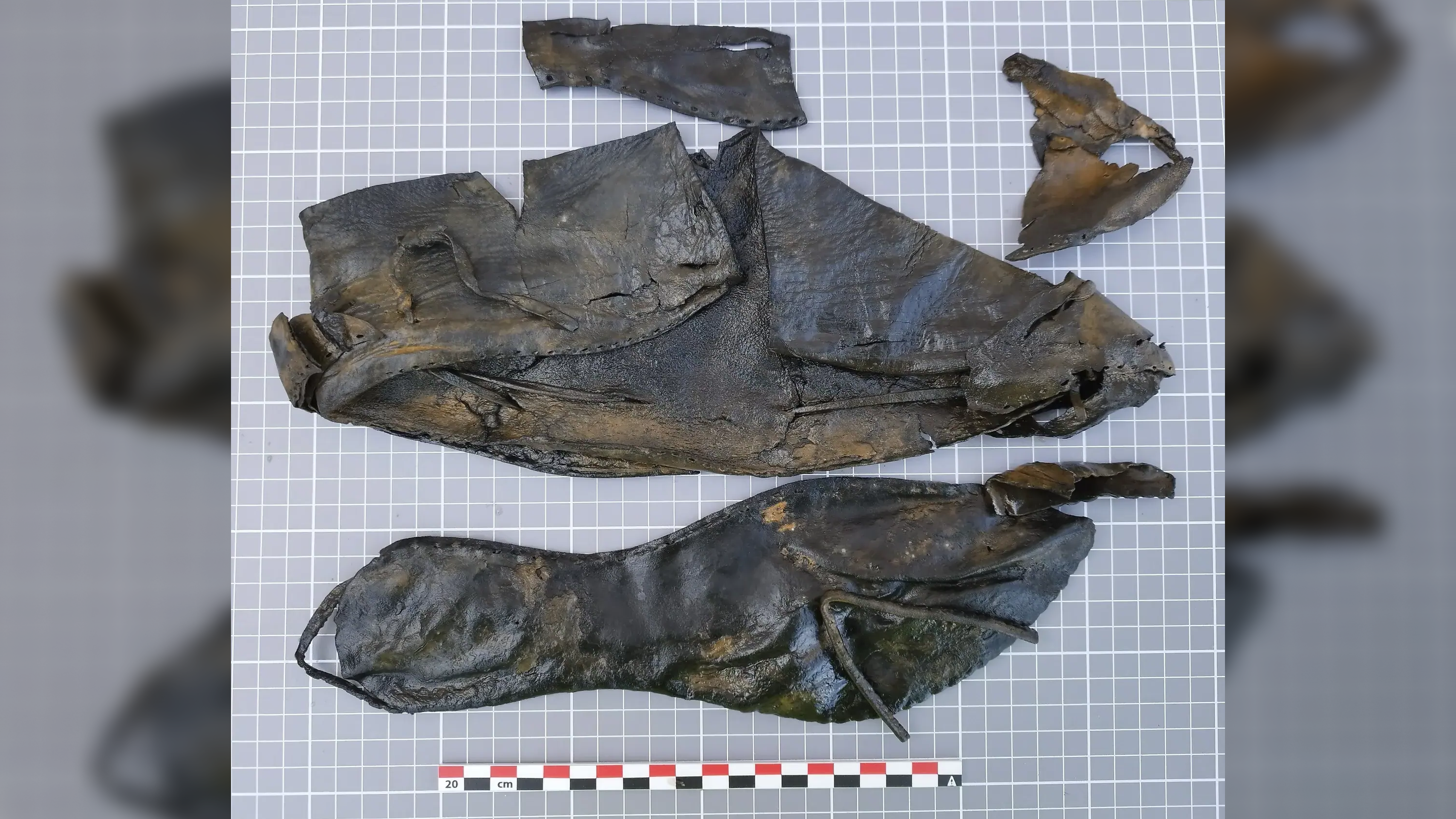14th-century sarcophagus found at fire-ravaged Notre Dame Cathedral
The sarcophagus is made of lead.

Archaeologists at Notre Dame Cathedral in Paris, which caught fire nearly three years ago, have discovered a previously unknown 14th-century leaden sarcophagus along with other burials, according to France's culture ministry.
It's not clear who was buried in the sarcophagus, but it was likely someone important.
The characteristics and location of the sarcophagus suggest that it holds the remains of "a high dignitary," according to a translated statement from the culture ministry released Monday (March 14).
The iconic 12th-century cathedral went up in flames during a renovation and restoration project in April 2019. Since then, the French government has moved forward with a reconstruction that will restore the cathedral's historic Gothic architecture, a feat that church officials hope will be completed by 2024, when Paris is slated to host the Summer Olympics, Reuters reported.
Related: In photos: Ancient tomb of a Celtic prince uncovered
In the latest step of the restoration, workers had planned to put up scaffolding ahead of reconstructing the cathedral's burned spire. Before the workers could erect the scaffolding, however, archaeologists surveyed the site to look for any artifacts in the way that might be damaged. During the excavation, which began Feb. 2 and will last until March 25, the team focused on the transept — the part of the cathedral where the floor runs perpendicular to the main building, forming a cross.
The transept was covered with a stone layer that dates to no later than the 18th century, according to the statement. Beneath this, archaeologists found "many burials" from different layers, indicating that this spot was used as a burial ground for a long period of time. These burials dated from the 14th century and rest in soils that may date back to the beginning of the 13th century.
Get the world’s most fascinating discoveries delivered straight to your inbox.
Among these burials, archaeologists found the "fully preserved," human-shaped leaden sarcophagus, according to the statement. Its placement at the cathedral's transept suggests that the interred person had elite status, while its underground layer indicates that it dates to the 14th century at the latest.
The excavation revealed another extraordinary find: a pit filled with painted sculptures that were once part of Notre Dame's rood screen — the ornate partition that divides the chancel and nave, or the different ends of the cathedral. This rood screen was built in around A.D. 1230 and destroyed at the beginning of the 1700s, according to the statement. The French architect Eugène Viollet-le-Duc (1814-1879) previously discovered other fragments of this rood screen, which are now on display at the Louvre Museum.
The new discovery will likely "provide new data on this rood screen and on the quality of its painted decoration," according to the statement.
Originally published on Live Science.

Laura is the archaeology and Life's Little Mysteries editor at Live Science. She also reports on general science, including paleontology. Her work has appeared in The New York Times, Scholastic, Popular Science and Spectrum, a site on autism research. She has won multiple awards from the Society of Professional Journalists and the Washington Newspaper Publishers Association for her reporting at a weekly newspaper near Seattle. Laura holds a bachelor's degree in English literature and psychology from Washington University in St. Louis and a master's degree in science writing from NYU.
